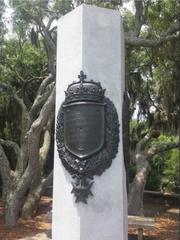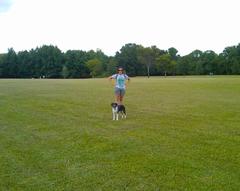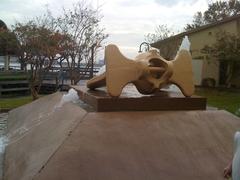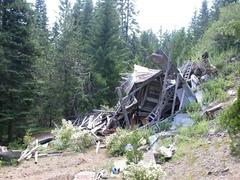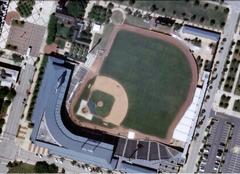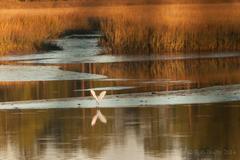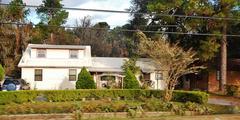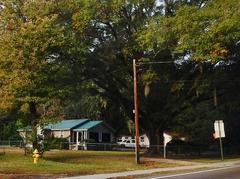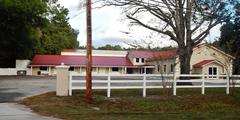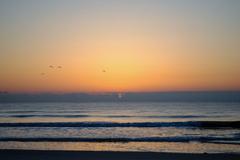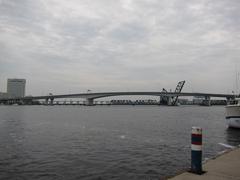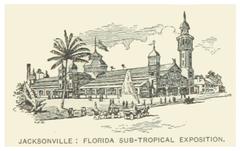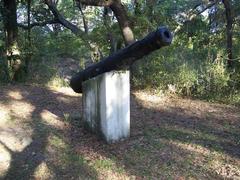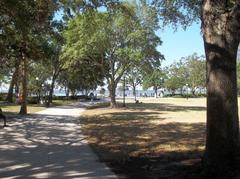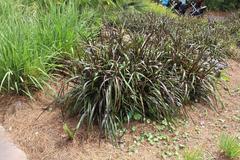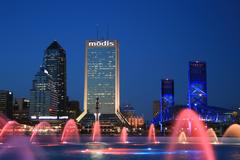
Comprehensive Guide to Visiting Jacksonville, Duval County, United States of America
Date: 13/08/2024
Discover Jacksonville: A Journey Through the Bold City
Welcome to Jacksonville, Duval County—a city where history blends seamlessly with modernity, creating a vibrant tapestry. Imagine stepping into a place where ancient Timucuan Indians once thrived, where European explorers left their footprints, and where echoes of the Civil War still resonate. Jacksonville isn’t just another city; it’s a living, breathing chronicle of America’s past and present.
Jacksonville boasts the largest municipal population in Florida and the largest land area of any city in the contiguous United States, making it a bustling metropolis and a treasure trove of historical and cultural wonders (Wikipedia). From the ruins of Fort Caroline to the resilient rise of the city after the Great Fire of 1901, Jacksonville’s story is one of perseverance and transformation (Visit Jacksonville).
Wander through neighborhoods like Riverside and Avondale, where historic charm meets modern vibrancy. Feel the salty sea breeze as you explore Kingsley Plantation or catch a concert at the nostalgic Florida Theatre. Jacksonville’s architectural gems, like those designed by Henry John Klutho, offer a glimpse into the city’s Beaux-Arts and Spanish Revival past (National Register of Historic Places).
Today, Jacksonville is a hub of culture, art, and outdoor adventures. Whether you’re savoring innovative Southern cuisine, exploring the thriving arts scene, or diving into the city’s rich African American heritage, Jacksonville promises an unforgettable experience (Visit Jacksonville). So, are you ready to uncover the hidden gems and timeless tales of this dynamic city?
Contents
- The Phoenix of Florida: Discovering Jacksonville, Duval County, United States of America
- Early Settlements and Indigenous History
- European Exploration and Settlement
- British and Spanish Rule
- Becoming Jacksonville
- Civil War and Reconstruction
- The Great Fire of 1901
- 20th Century Growth and Development
- Architectural and Cultural Heritage
- Historic Landmarks and Attractions
- Civil Rights and African American Heritage
- Modern Jacksonville
- Visitor Tips
- Local Secrets and Hidden Gems
- Sensory Descriptions
- Interactive Elements
- Cultural Context and Etiquette
- Practical Information with a Twist
- Pop Culture References
- Time-Based Itineraries
- Local Lingo Lessons
- Seasonal Highlights
- Myth Busting and Surprises
- Storytelling Elements
- FAQ
- Call to Action
The Phoenix of Florida: Discovering Jacksonville, Duval County, United States of America
Early Settlements and Indigenous History
Jacksonville’s roots stretch back thousands of years, with the Timucuan Indians carving out a thriving existence around the mouth of the St. Johns River long before Europeans arrived. The Timucuan culture blossomed around 500 B.C., representing the true origins of this vibrant region (Visit Jacksonville).
European Exploration and Settlement
The French were the first Europeans to establish a settlement here with Fort Caroline in 1564. Though their colonial dreams were short-lived—thanks to Spanish forces renaming it San Mateo in 1565—this marked the beginning of Jacksonville’s European saga (Nomadasaurus).
British and Spanish Rule
Cow Ford, as it was once known, saw British settlers arrive in the late 18th century, turning the area into a bustling plantation hub along the St. Johns River. After the American Revolution, the Spanish resumed control, continuing to cultivate trade and agriculture (Wikipedia).
Becoming Jacksonville
In 1821, Florida became a U.S. territory. By 1822, a proper town emerged, named Jacksonville in honor of Andrew Jackson. This bustling town quickly grew into a commercial hotspot, exporting everything from cotton to oranges, and importing manufactured goods from the North (Visit Jacksonville).
Civil War and Reconstruction
Jacksonville during the Civil War was a tale of two loyalties: Union and Confederacy. This strategic port city saw Union troops occupy it four times, and its population surged as freed and runaway slaves sought new beginnings. The city played a crucial role in the Union blockade (Visit Jacksonville).
The Great Fire of 1901
The Great Fire of 1901 razed 146 city blocks, destroyed over 2,368 buildings, and left about 10,000 people homeless. Yet, the city rose again, rebuilding with resilience and laying down the foundation for future growth (Wikipedia).
20th Century Growth and Development
Jacksonville blossomed in the late 19th and early 20th centuries, becoming a beloved winter haven for Northerners. Its importance grew with the arrival of the U.S. Navy in 1940, and by 2003, a new federal building symbolized its ongoing evolution (Wikipedia).
Architectural and Cultural Heritage
Jacksonville is a treasure trove of historic architecture, with 110 properties and districts on the National Register of Historic Places. Stroll past buildings designed by Henry John Klutho and Marsh & Saxelbye, showcasing styles from Mission/Spanish Revival to Beaux Arts (National Register of Historic Places).
Historic Landmarks and Attractions
Exploring Jacksonville’s past? Don’t miss these gems:
-
Kingsley Plantation: Discover the preserved plantation house and tabby slave quarters on Fort George Island. This National Park Service site offers a glimpse into the region’s history (Visit Jacksonville).
-
Fort Caroline National Memorial: Wander through the reconstructed fort and enjoy the scenic St. Johns River views. This national park preserves the site of the first French settlement in the U.S. (Nomadasaurus).
-
Florida Theatre: One of only four remaining high-style movie palaces from the 1920s in Florida, hosting over 200 events annually (Visit Jacksonville).
-
Riverside and Avondale Neighborhoods: These neighborhoods blend historic charm with modern vibrancy. Imagine tree-lined streets, beautifully preserved architecture, and a thriving arts scene (Nomadasaurus).
Civil Rights and African American Heritage
Jacksonville’s African American heritage is rich and influential. Walk the Black Heritage Trail to learn about the city’s civil rights history, and don’t miss the Ritz Theatre & Museum, celebrating African American cultural contributions (Visit Jacksonville).
Modern Jacksonville
Today, Jacksonville is a bustling metropolis with over a million residents. Diverse, vibrant, and historically rich, Jacksonville has something for everyone (Wikipedia).
Visitor Tips
Planning a visit to Jacksonville? Here are some tips:
- Plan Ahead: Research historic sites and check their hours.
- Take Guided Tours: Gain deeper insights with expert guides.
- Explore Diverse Neighborhoods: Don’t miss Riverside and Avondale.
- Visit Museums: MOSH and the Ritz Theatre & Museum are must-sees.
- Enjoy the Outdoors: Visit sites in parks and nature reserves, like Fort Caroline and Kingsley Plantation.
Local Secrets and Hidden Gems
- Cummer Museum of Art and Gardens: This lesser-known gem offers stunning art collections and beautiful gardens.
- Chamblin Bookmine: A quirky, must-visit spot for book lovers.
- Sweet Pete’s Candy: Hidden in a historic mansion, it’s a whimsical candy factory.
Sensory Descriptions
Imagine the salty sea breeze, the sound of jazz floating from a downtown café, the taste of fresh seafood, the feel of sun-warmed bricks underfoot, and the sight of historic buildings framed by lush greenery.
Interactive Elements
- Scavenger Hunt: Find the oldest building in Jacksonville, visit a site on the Black Heritage Trail, and snap a photo at the Florida Theatre.
Cultural Context and Etiquette
Jacksonville is a blend of Southern charm and modern flair. Greet locals with a friendly “hey y’all” and don’t be surprised by the city’s laid-back pace. Respect historical sites and engage with the community’s vibrant cultural scene.
Practical Information with a Twist
- Plan Ahead: Research the historic sites and check their hours.
- Take Guided Tours: Gain deeper insights with expert guides.
- Explore Diverse Neighborhoods: Don’t miss Riverside and Avondale.
- Visit Museums: MOSH and the Ritz Theatre & Museum are must-sees.
- Enjoy the Outdoors: Visit sites in parks and nature reserves, like Fort Caroline and Kingsley Plantation.
Pop Culture References
Did you know? Jacksonville was the filming location for parts of “The Devil’s Advocate” and “G.I. Jane.” Plus, Lynyrd Skynyrd, the iconic rock band, hails from here.
Time-Based Itineraries
One Day in Jacksonville
- Start with breakfast at a local café
- Visit Kingsley Plantation
- Explore the Cummer Museum of Art and Gardens
- Lunch in Riverside
- Afternoon at MOSH
- Evening concert at the Florida Theatre
Weekend Getaway
Day 1
- Morning: Fort Caroline National Memorial
- Lunch: Local seafood restaurant
- Afternoon: Black Heritage Trail
- Evening: Riverside arts scene
Day 2
- Morning: Chamblin Bookmine
- Lunch: Sweet Pete’s Candy
- Afternoon: Relax in Avondale
- Evening: Dinner downtown
Local Lingo Lessons
- Hey y’all: A friendly greeting or expression of approval.
- Duval!: A chant of local pride, often heard at sports events.
Seasonal Highlights
- Spring: Azaleas bloom, and the Jacksonville Jazz Festival fills the air with music.
- Summer: Beach days and fireworks on the Fourth of July.
- Fall: Mild weather perfect for outdoor exploration.
- Winter: Enjoy the mild climate and holiday festivities.
Myth Busting and Surprises
- Myth: Jacksonville is just another beach town.
- Fact: Jacksonville is a diverse city with a rich history and cultural scene.
Storytelling Elements
- The Great Fire of 1901: Imagine a city engulfed in flames, only to rise again stronger and more resilient.
- Civil Rights Movement: Picture the brave individuals who fought for equality, leaving a legacy of change.
FAQ
- What’s the best time to visit Jacksonville?
- Spring and fall offer the best weather for exploring.
- Are there guided tours available?
- Yes, many historic sites offer guided tours.
- What are some must-see attractions?
- Kingsley Plantation, Fort Caroline, and the Florida Theatre are top picks.
Call to Action
Ready to uncover Jacksonville’s secrets? Download Audiala, our tour guide app, for beautifully crafted audio guides that bring the city’s history and culture to life. Let Audiala be your guide as you explore this dynamic city. Download now and start your adventure!
Sources
- Visit Jacksonville. (n.d.). History of Jacksonville. Retrieved from Visit Jacksonville
- Wikipedia. (n.d.). History of Jacksonville, Florida. Retrieved from Wikipedia
- National Register of Historic Places. (n.d.). Duval County, Florida. Retrieved from National Register of Historic Places
- Nomadasaurus. (n.d.). Things to Do in Jacksonville. Retrieved from Nomadasaurus
